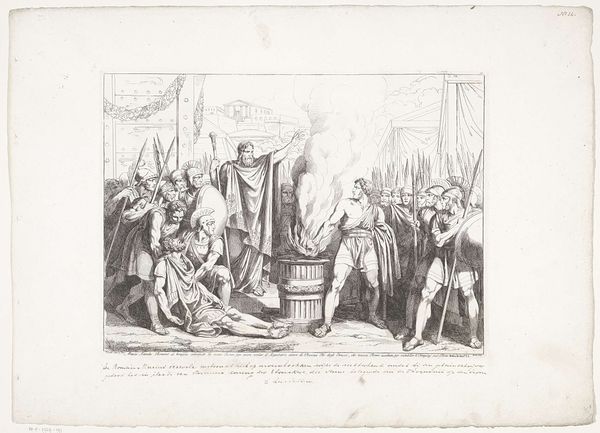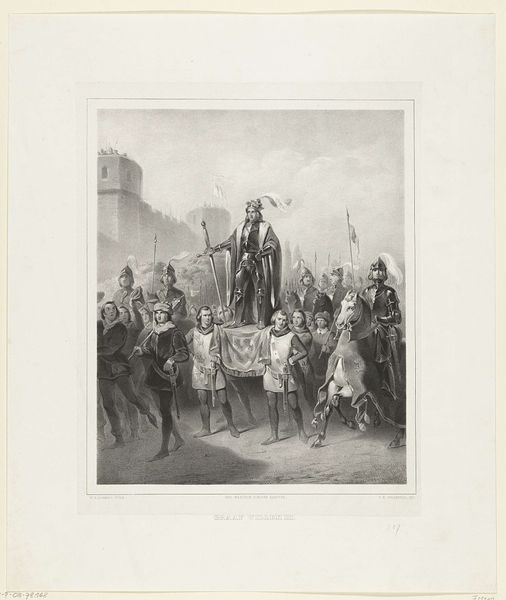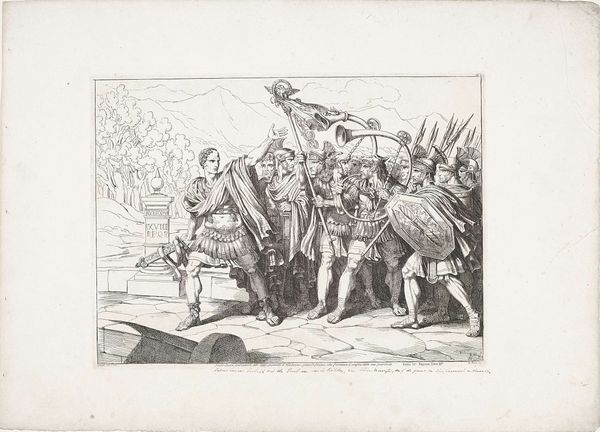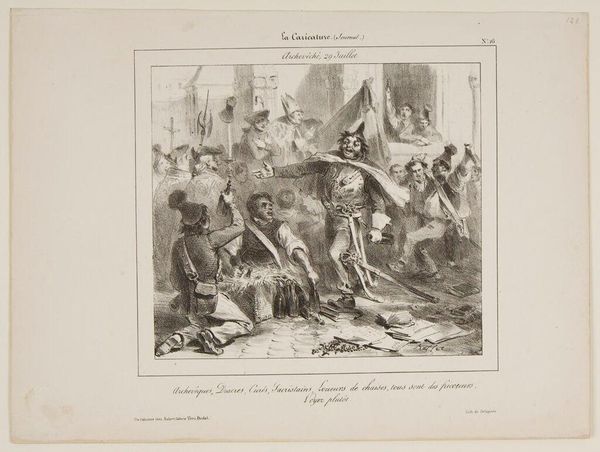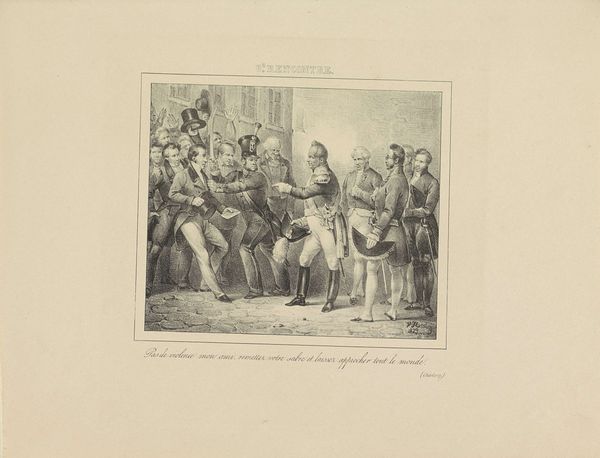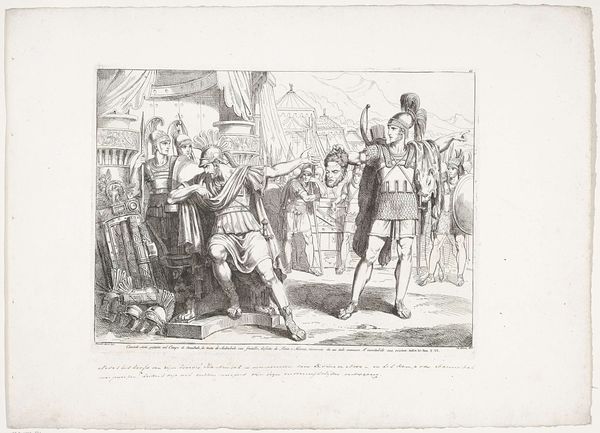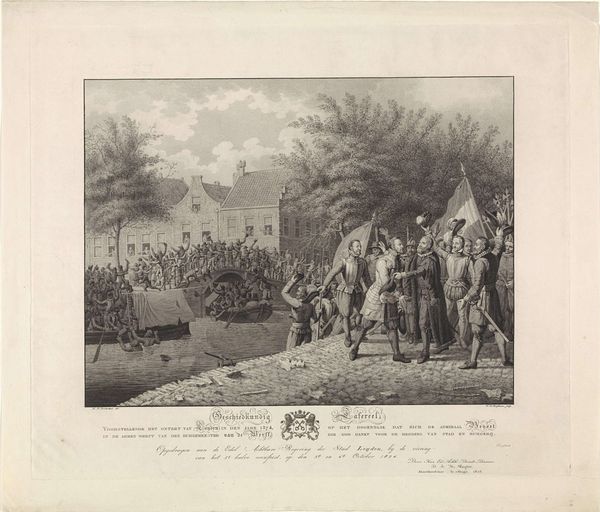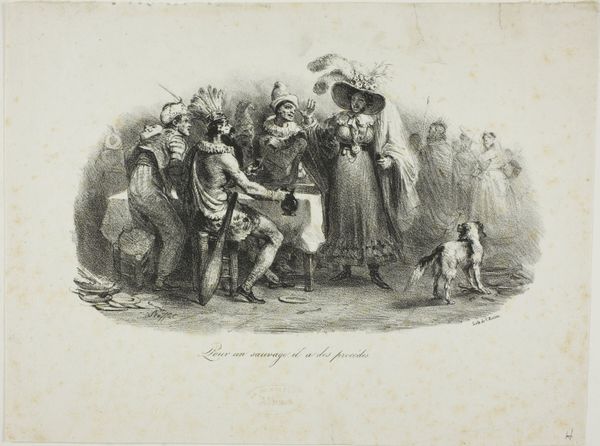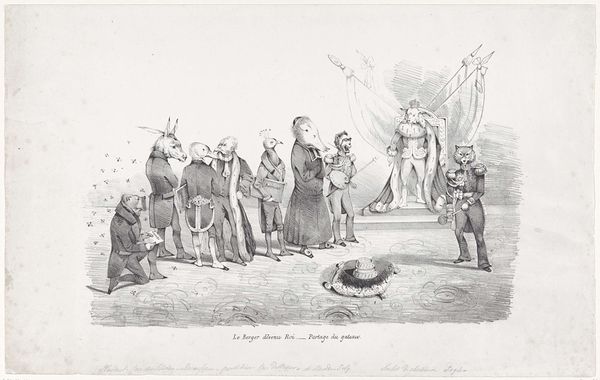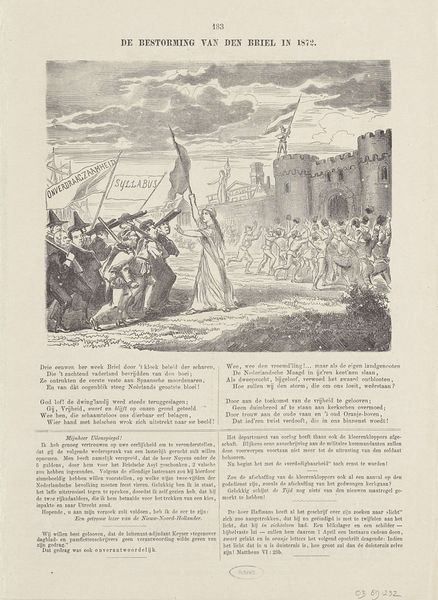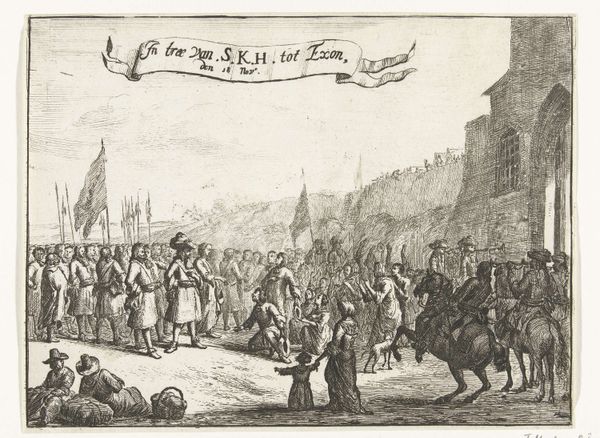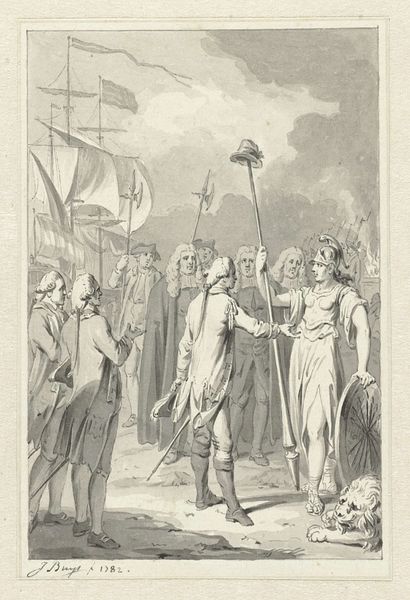
print, engraving
# print
#
caricature
#
romanticism
#
history-painting
#
engraving
Dimensions: height 295 mm, width 460 mm
Copyright: Rijks Museum: Open Domain
Curator: Here we have an engraving from 1829, "Spotprent op Baron G.J.A. de Stassart" or "Caricature of Baron G.J.A. de Stassart," from an anonymous artist and residing in the collection of the Rijksmuseum. Editor: It strikes me as surprisingly balanced, compositionally. Two distinct groups facing each other create a tense but symmetrical division of space. Curator: Indeed, that formal structure enhances the symbolic tension. On one side, we see Baron de Stassart, recoiling, perhaps from the judgment of the clerics and their followers on the other side. Notice how their conical hats might imply shame, punishment, or even political statement. Editor: Precisely! And look at the meticulous lines defining the clothing, contrasting the dark, voluminous robes of the clergy with the comparatively neat attire of the Baron and his compatriots. It establishes visual and possibly moral opposition. Semiotically, this can be decoded in so many directions. Curator: Absolutely. Contextually, Baron de Stassart was a prominent figure in the Southern Netherlands, and this print likely refers to political or religious controversies of that time, rendered visible through such elements as the religious banner or the sign pointing towards "Province de Namur." His body language conveys feelings of distress, indicating his vulnerability in that precise socio-historical situation. Editor: Note the use of light and shadow – strategically placed to emphasize the facial expressions, which drives home the emotional impact. There is something visually captivating about the play of shadows around the folds of cloth that creates a sense of implied dynamism between figures in the artwork. Curator: Which leads me to think about continuity here—these sartorial symbols resonate throughout history, suggesting rigidity or, perhaps, even extremism through recognizable symbols such as hats, banners, and facial expressions. Visual codes endure over long expanses of time. Editor: A fantastic point! Analyzing this work from multiple vantages, as we did just now, reveals how art encapsulates—and visualizes—socio-historical-cultural tensions of that specific time period. Curator: Yes, this little print opens a window to 19th-century Belgian social intricacies—power relations made visible.
Comments
No comments
Be the first to comment and join the conversation on the ultimate creative platform.
